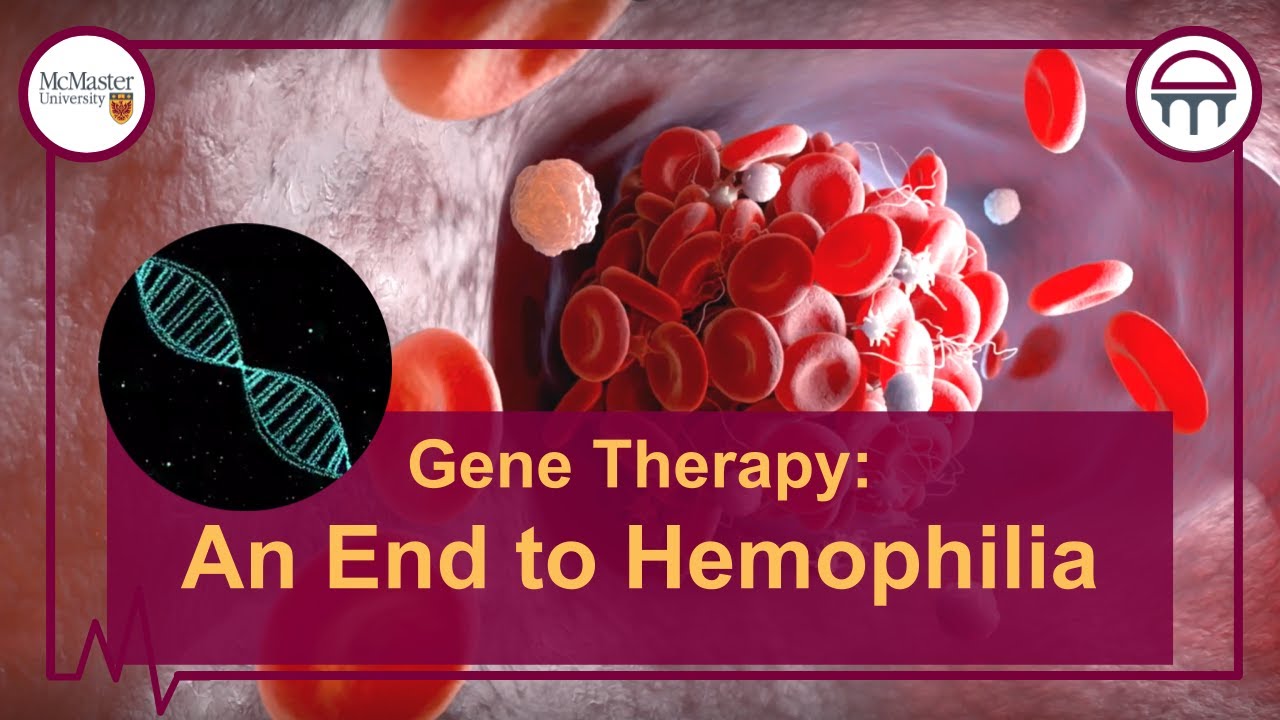Example punnet square for sex-linked recessive trait | High school biology | Khan Academy
Summary
TLDRThis instructional video script explains hemophilia, an X-linked recessive trait affecting blood clotting. It details the genetic inheritance, using a carrier woman and a hemophiliac man as an example. The script guides viewers through understanding genotypes and Punnett squares to calculate the probability of their daughter having hemophilia, revealing a 50% chance if born female. It also addresses related inheritance probabilities, such as for hemophiliac sons and non-hemophiliac offspring.
Takeaways
- 🩸 Hemophilia is an X-linked recessive trait that affects blood clotting.
- 🧬 Individuals with hemophilia have a genetic condition where their blood has difficulty clotting.
- 👩👧 A carrier woman has one X chromosome with the hemophilia allele and one without, but does not exhibit the trait.
- 👨👦 A hemophiliac man has the hemophilia allele on his single X chromosome, leading to the expression of the trait.
- 🧬 The mother's genotype is represented as X^HX^h, indicating one dominant allele (H) and one recessive allele (h).
- 🧬 The father's genotype is represented as X^hY, indicating the hemophilia allele on the X chromosome and a Y chromosome.
- 🔍 To determine the offspring's genotype, a Punnett square is used to visualize the possible genetic combinations.
- 👧 Daughters are XX, so the scenarios with two X chromosomes are considered for determining if a daughter has hemophilia.
- 🤔 The chance of having a daughter with hemophilia, given a carrier mother and a hemophiliac father, is 50%.
- 👦 The chance of having a hemophiliac son is 25%, as only one scenario out of four results in a son with the condition.
- 👶 The overall chance of having a hemophiliac offspring is 50%, considering both sons and daughters.
- 👦 Given a son, there is a 50% chance that he does not have hemophilia, as only one scenario out of the two son scenarios results in a non-hemophiliac son.
Q & A
What is hemophilia?
-Hemophilia is an X-linked recessive trait that affects blood clotting, causing individuals with the condition to have difficulty with their blood clotting properly.
How does hemophilia inheritance work?
-Hemophilia is inherited in an X-linked recessive pattern, meaning it is more common in males and can be carried by females without them showing symptoms.
What does it mean to be a carrier for hemophilia?
-A carrier for hemophilia is a female who has one X chromosome with the hemophilia allele (recessive gene) but does not exhibit symptoms because the other X chromosome has the dominant allele.
What are the genotypes of a carrier woman and a hemophiliac man?
-A carrier woman has the genotype X^HX^h, where X^H is the normal allele and X^h is the hemophilia allele. A hemophiliac man has the genotype X^hY, with the Y chromosome being the male sex chromosome.
How can you determine the likelihood of a daughter having hemophilia using a Punnett square?
-By using a Punnett square, you can visualize the possible combinations of alleles that a child can inherit from both parents. In the case of a carrier woman and a hemophiliac man, the Punnett square will show the possible genotypes of their offspring.
What is the percent chance that a daughter of a carrier woman and a hemophiliac man will have hemophilia?
-There is a 50% chance that a daughter will have hemophilia, as she can either inherit the X chromosome with the hemophilia allele from both parents or only from her father.
What are the different scenarios for the offspring of a carrier woman and a hemophiliac man?
-The scenarios include a daughter with hemophilia (X^hX^h), a daughter who is a carrier (X^HX^h), a son with hemophilia (X^hY), and a son without hemophilia (X^HY).
What is the percent chance of having a son with hemophilia?
-There is a 25% chance of having a son with hemophilia, as only one of the four Punnett square outcomes will result in a son with the X^hY genotype.
What is the percent chance of having a non-hemophiliac son?
-There is also a 25% chance of having a non-hemophiliac son, represented by the X^HY genotype in the Punnett square.
What is the overall percent chance of having a hemophiliac offspring?
-The overall percent chance of having a hemophiliac offspring is 50%, as two out of the four Punnett square outcomes result in hemophilia.
Given that they had a son, what is the percent chance that the son does not have hemophilia?
-Given that they had a son, there is a 50% chance that the son does not have hemophilia, as one out of the two male scenarios results in a son without the condition.
Outlines

Esta sección está disponible solo para usuarios con suscripción. Por favor, mejora tu plan para acceder a esta parte.
Mejorar ahoraMindmap

Esta sección está disponible solo para usuarios con suscripción. Por favor, mejora tu plan para acceder a esta parte.
Mejorar ahoraKeywords

Esta sección está disponible solo para usuarios con suscripción. Por favor, mejora tu plan para acceder a esta parte.
Mejorar ahoraHighlights

Esta sección está disponible solo para usuarios con suscripción. Por favor, mejora tu plan para acceder a esta parte.
Mejorar ahoraTranscripts

Esta sección está disponible solo para usuarios con suscripción. Por favor, mejora tu plan para acceder a esta parte.
Mejorar ahora5.0 / 5 (0 votes)






